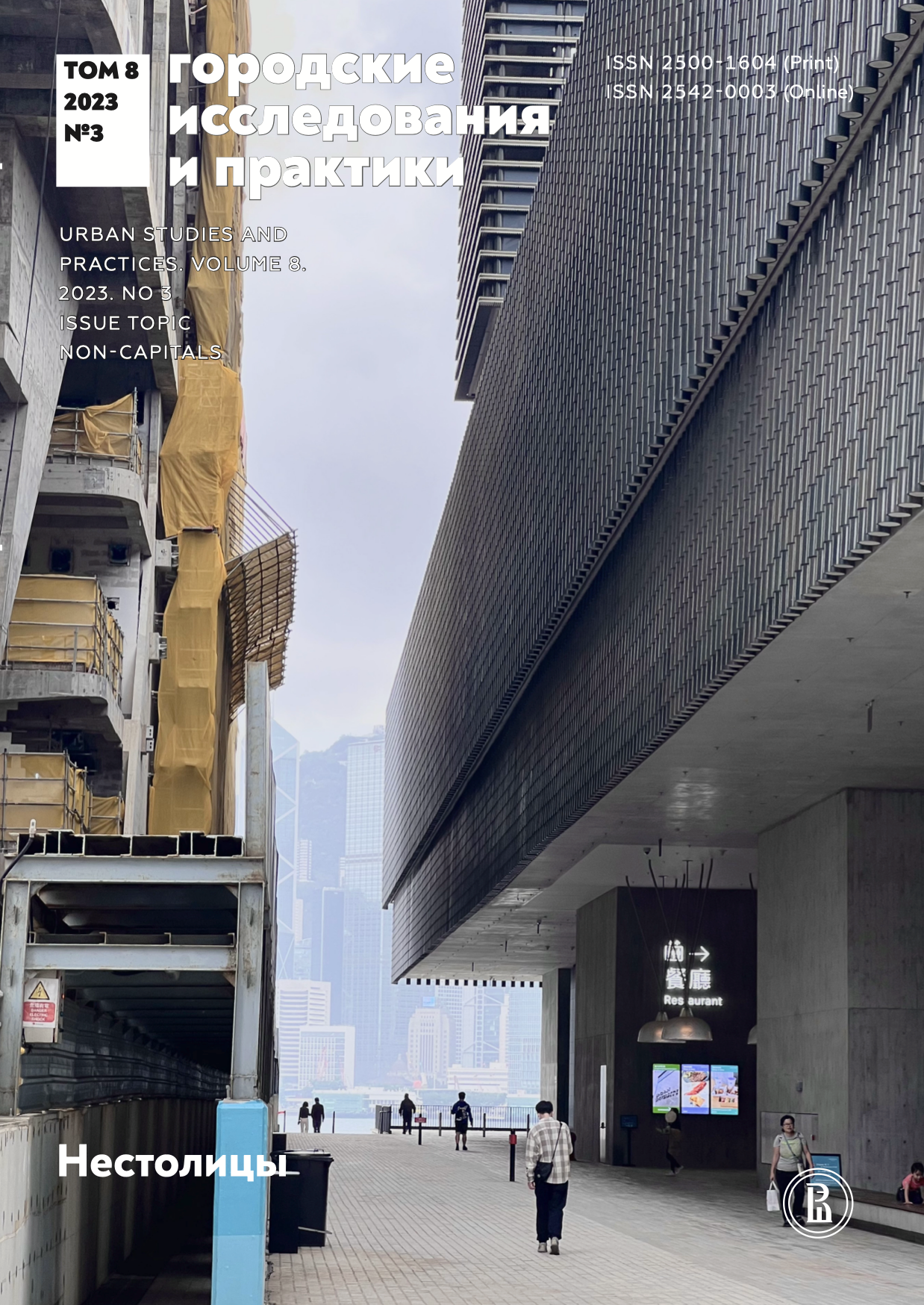The Impact of the Covid-19 Pandemic on the Socio-Economic Development of Monotowns in Russia
Abstract
As of today, there are 321 monotowns in the Russian Federation, where a total of 12.7 million people or 8.7% of the entire population of Russia live. Monotowns are territories characterized by high dependency of socio-economic stability on a single city-forming enterprise or industry, which makes them prone to crises even without external shocks.
This study is dedicated to examining the consequences of the COVID-19 crisis in the monotowns of the Russian Federation. The work explores how the pandemic has affected the existing problems caused by the single-industry specialization, focusing on economic and demographic indicators. The basis of the study is open data from official statistics. A unified database of statistical indicators for all single-industry municipalities from 2015 to 2020 was compiled to aggregate and analyze this data. Subsequently, by modeling with the method of exponential smoothing and utilizing the historical data series for the 5 years preceding the crisis, forecast estimates of the indicators for 2020 were obtained, as if the crisis had not occurred, and the territories continued the development trend set in previous years. In this article the author tried to search for and analyze deviations between the actual values of the indicators and their forecast estimates obtained during modeling. The author identified negative deviations in the development dynamics of most monotowns, but didn’t found a uniform response of the indicators of all territories to the crisis conditions. However, the additional standardization of the indicators allowed for the differentiation of these territories and revealed a number of patterns depending on the scale, industry specialization, and spatial position of the monotowns.
Downloads
References
Анимица Е. Г. и др. (2010) Концептуальные подходы к разработке стратегии развития монопрофильного города // Международный журнал экспериментального образования. № 11. С. 56–57.
База данных показателей муниципальных образований (2023) Росстат. Режим доступа: https://www.gks.ru/dbscripts/munst/ (дата обращения: 16.05.2023).
База данных показателей муниципальных образований: объединенные и обработанные данные за 2006–2020 гг. (2022) Росстат. Режим доступа: https://data.rcsi.science/data-catalog/datasets/115/ (дата обращения: 27.03.2023).
Вартанова М. Л. (2021) Специфика урбанизации в России: ведущие факторы социального развития городской и сельской местности // Вестник Академии знаний. Том 45. № 4. С. 61–71.
Землянский Д. Ю., Ламанов С. В. (2014) Сценарии развития монопрофильных городов России // Вестник Московского университета. Серия 5. География. № 4. С. 69–74.
Зубаревич Н. В. (2015) Кризисы в постсоветской России: региональная проекция // Региональные исследования. №. 1. С. 23–31.
Зубаревич Н. В., Сафронов С. Г. (2020) Регионы России в острой фазе коронавирусного кризиса: отличия от предыдущих экономических кризисов 2000-х // Региональные исследования. № 2. С. 4–17.
Индексы потребительских цен на товары и услуги по Российской Федерации в 2011–2022 гг. (2022) Росстат. Режим доступа: https://rosstat.gov.ru/storage/mediabank/ind_potreb_cen_05.html (дата обращения: 06.05.2023).
Кравченко Е. (2020) Какие отрасли российской промышленности пострадали от пандемии коронавируса сильнее всего // Forbes. Режим доступа: https://www.forbes.ru/biznes/404085-kakie-otrasli-rossiyskoy-promyshlennosti-postradali-ot-pandemii-koronavirusa-silnee (дата обращения: 11.05.2023).
Маслова А. Н. (2011) Моногорода в России: проблемы и решения // Контуры глобальных трансформаций: политика, экономика, право. Том 5. № 4. С. 16–28.
Объем социальных выплат населению и налогооблагаемых денежных доходов населения в разрезе муниципальных образований. Динамические ряды (2023) Росстат. Режим доступа: https://rosstat.gov.ru/storage/mediabank/UROV_munst_.htm (дата обращения: 06.05.2023).
Постановление Правительства РФ от 29 июля 2014 г. N 709 «О критериях отнесения муниципальных образований Российской Федерации к монопрофильным (моногородам) и категориях монопрофильных муниципальных образований Российской Федерации (моногородов) в зависимости от рисков ухудшения их социально-экономического положения». Режим доступа: https://www.consultant.ru/document/cons_doc_LAW_166538/ (дата обращения: 18.01.2023).
Приложение к докладу Президенту Российской Федерации «COVID-19. Последствия для бизнеса и экономики» // Уполномоченный при Президенте Российской Федерации по защите прав предпринимателей (2020) Режим доступа: http://doklad.ombudsmanbiz.ru/2020/7.pdf (дата обращения: 20.05.2023).
Распоряжение Правительства РФ от 29.07.2014 N 1398-р (ред. от 21.01.2020) «Об утверждении перечня монопрофильных муниципальных образований Российской Федерации (моногородов)». Режим доступа: http://www.consultant.ru/document/cons_doc_LAW_166540/ (дата обращения: 18.01.2023).
Риски 2022: градообразующие организации и моногорода (2022) Экспертно-аналитический доклад ЦСР. Режим доступа: https://www.csr.ru/ru/research/riski-2022-gradoobrazuyushchie-organizatsii-i-monogoroda/ (дата обращения: 23.01.2023).
Фомин М. В., Безвербный В.А., Шушпанова И.С., Микрюков Н.Ю., Лукашенко Е.А., Мирязов Т.Р. (2020) Моногорода Сибири и Дальнего Востока России: потенциал и перспективы развития // Вопросы государственного и муниципального управления. № 1. С. 137–165.
Deb P., Furceri D., Ostry J. D., Tawk N. (2022) The Economic Effects of COVID-19 Containment Measures // Open Economies Review. Vol. 33. No. 1. P. 1–32.
Hyndman R.J., Athanasopoulos G. (2018) Forecasting: Principles and Practice. Melbourne: OTexts.
Rahman M.H., Salma U., Hossain M.M., Khan M.T.F. (2016) Revenue Forecasting Using Holt–Winters Exponential Smoothing // Research & Reviews: Journal of Statistics. Vol. 5. No. 3. P. 19–25.
The COVID-19 Crisis in Urban and Rural Areas (2021) // OECD Regional Outlook 2021. Addressing COVID-19 and Moving to Net Zero Greenhouse Gas Emissions. Режим доступа: https://www.oecdilibrary.org/sites/c734c0feen/index.html?itemId=/content/component/c734c0fe-en (дата обращения 20.04.2023).

